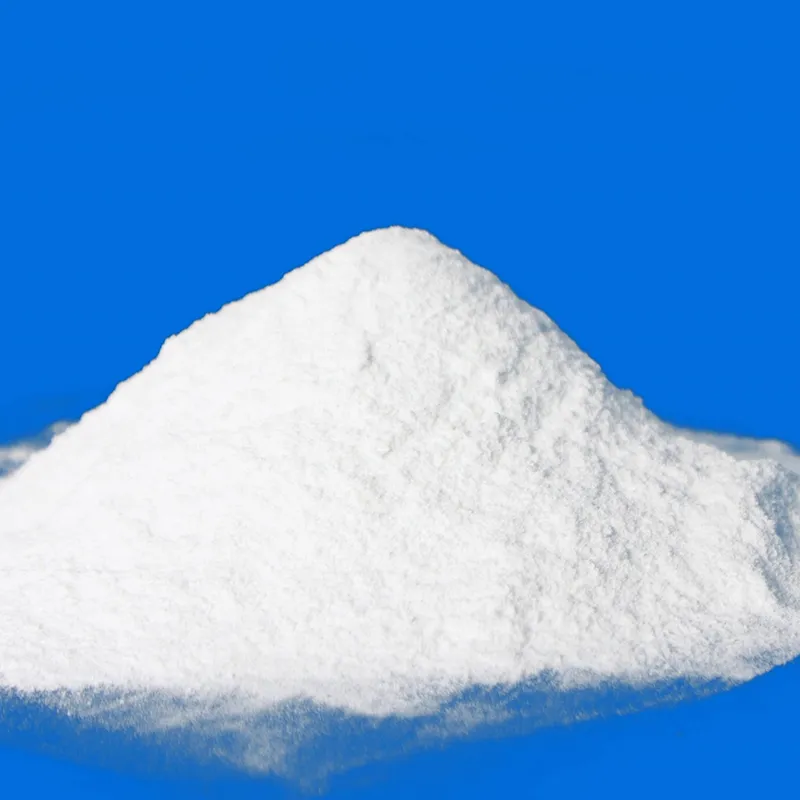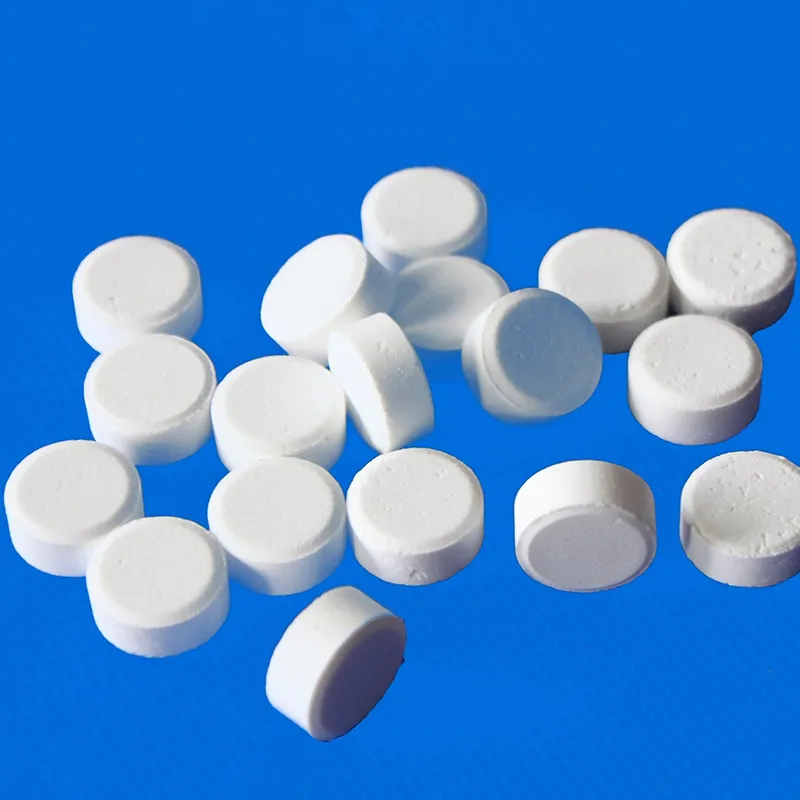
sodium dichloroisocyanurate dihydrate - Rapid Disinfection
Practical Guide to Disinfecting with sodium dichloroisocyanurate dihydrate
If you spend time around water treatment plants, food facilities, or pool maintenance crews, you hear one acronym over and over: SDIC. And yes, we’re talking about sodium dichloroisocyanurate dihydrate, the reliable “tablet-and-go” oxidizing biocide that’s quietly replacing splashy liquid bleach in a lot of operations. To be honest, it’s the convenience, stability, and consistent available chlorine that win people over.

Why the industry is moving this way
Post-pandemic hygiene protocols, tighter wastewater rules, and staff shortages push buyers toward compact, predictable disinfectants. sodium dichloroisocyanurate dihydrate stores well, meters easily, and—surprisingly—often reduces odor complaints vs. traditional hypochlorite. In food plants and hospitality, managers like the simple math: dose, verify, move on.
Core specifications (real-world use may vary)
| Chemical name | Sodium dichloroisocyanurate dihydrate (SDIC·2H2O) |
| CAS | 51580-86-0 |
| Available chlorine | ≈56% (w/w) |
| Forms | Granules (8–30 mesh), tablets (1–200 g), powder |
| pH (1% solution) | around 6.0–7.0 |
| Solubility (25°C) | ≈25 g per 100 g water |
| Shelf life | 24 months sealed, cool & dry |
| Certifications | ISO 9001; NSF/ANSI 60 possible; SDS & COA provided |

How it’s made (and verified)
Materials: cyanuric acid, sodium base, controlled chlorination; then hydration to the dihydrate, followed by granulation/tableting. Methods: closed-reactor chlorination, low-dust granulation, anti-caking additives where allowed. Testing: available chlorine via iodometric titration; disinfection performance verified to EN 1276/EN 13697 and ASTM E1052/E2315 protocols; residual chlorine checked by DPD per ISO 7393. Service life is stress-tested in accelerated aging at 40°C/75% RH—simple but useful.
Where it’s used
- Potable water and emergency chlorination; swimming pools and spas. - Food & beverage surfaces, CIP adjunct, produce wash (when legally permitted). - Healthcare housekeeping, linen sanitizing. - Cooling towers, livestock water lines. Many customers say the dosing predictability reduces operator errors.
Performance snapshots
In time-kill tests, 200 ppm free available chlorine from sodium dichloroisocyanurate dihydrate achieved ≥4-log bacterial reduction within 5 minutes (EN 1276 conditions). On non-porous surfaces, EN 13697 trials typically hit target log reductions for E. coli and S. aureus. I guess the takeaway: fast, repeatable kills with decent material compatibility when rinsed.
Vendor comparison (indicative)
| Vendor | MOQ | Lead time | Certs | Customization | Price (EXW) |
| Tenger Chemical (Hebei, China) | ≈500 kg | 7–15 days | ISO 9001, COA, SDS; third-party test on request | Granule size, tablet weight, packaging | Competitive |
| Trader A (APAC) | 1–2 tons | 15–25 days | Basic COA | Limited | Lower |
| Brand B (EU/US) | ≈100 kg | 3–5 days | ISO, NSF options | Broad SKUs | Premium |
Origin: 3-2-501, North Courtyard, West District, Jiuli Courtyard, Yuhua District, Shijiazhuang City, Hebei, China.

Customization and packaging
Options include effervescent tablets (1–20 g), pool tablets (50–200 g), granular (8–30 mesh), and moisture-controlled pouches. Packaging: 1 kg pails, 5 kg/10 kg cartons, 25 kg fiber drums. Many customers say smaller SKUs reduce wastage on shift changeovers.
Two quick case notes
Municipal pool, MENA: Switching to sodium dichloroisocyanurate dihydrate tablets stabilized FAC between 1.5–2.0 ppm with ≈12% chemical savings month-on-month; user complaints dropped (chloramine odor down) after 3 weeks.
Food processor, EU: Surface disinfection at 200–250 ppm hit ≥4-log reduction for Listeria surrogate in 5 min (EN 13697), while tablet dosing cut prep time by ~30% compared to liquid bleach.

Safety note: follow SDS, local approvals, and label directions. Verify contact time, pH, and free chlorine with on-site testing.
Authoritative references
- WHO: Guidelines for Drinking-water Quality & Chlorination Practices.
- EN 1276 and EN 13697: Chemical disinfectants—bactericidal/surface test methods.
- ASTM E1052/E2315: Standard virus and time-kill evaluations.
- ISO 7393-2: Water quality—determination of free and total chlorine.
-
What Is a Food Additive? Global Insights, Applications & Future TrendsNewsNov.24,2025
-
968 Sweetener: The Modern Solution for Health-Conscious SweeteningNewsNov.23,2025
-
Discover the Benefits and Uses of 965 Sweetener (Erythritol) | Tenger ChemicalNewsNov.23,2025
-
961 Sweetener - A Next-Gen Sugar Alternative for Health and IndustryNewsNov.23,2025
-
Understanding 960 Sweetener: The Modern Sugar Alternative for Health and IndustryNewsNov.22,2025
-
Everything You Need to Know About 955 950 Sweeteners – Benefits, Uses, and TrendsNewsNov.22,2025
-
953 Sweetener: Global Insights, Applications, and Future TrendsNewsNov.21,2025
Hebei Tenger Chemical Technology Co., Ltd. focuses on the chemical industry and is committed to the export service of chemical raw materials.
-

view more DiethanolisopropanolamineIn the ever-growing field of chemical solutions, diethanolisopropanolamine (DEIPA) stands out as a versatile and important compound. Due to its unique chemical structure and properties, DEIPA is of interest to various industries including construction, personal care, and agriculture. -

view more TriisopropanolamineTriisopropanolamine (TIPA) alkanol amine substance, is a kind of alcohol amine compound with amino and alcohol hydroxyl, and because of its molecules contains both amino and hydroxyl. -

view more Tetramethyl Thiuram DisulfideTetramethyl thiuram disulfide, also known as TMTD, is a white to light-yellow powder with a distinct sulfur-like odor. It is soluble in organic solvents such as benzene, acetone, and ethyl acetate, making it highly versatile for use in different formulations. TMTD is known for its excellent vulcanization acceleration properties, which makes it a key ingredient in the production of rubber products. Additionally, it acts as an effective fungicide and bactericide, making it valuable in agricultural applications. Its high purity and stability ensure consistent performance, making it a preferred choice for manufacturers across various industries.





